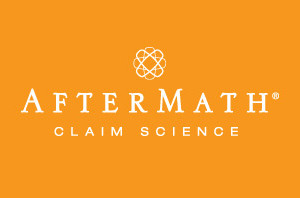
It’s been almost three years since Google’s creation of parent company Alphabet took place, but it’s branding lessons linger today.
Why is this a big deal?
Google, in a surprising move at the time, formed a parent company by the name of Alphabet. Google would then be one of many brands within Alphabet’s portfolio. With a brand as thriving and familiar as Google, this would seem like a questionable move, but when you look at the overall branding strategy of this move, it makes plenty of sense.
The Bigger Picture of Google’s Rebrand
Most of Google’s move can be explained by the house of brands (HOB) strategy. Essentially, one company holds multiple brands. Think of P&G, for example. P&G includes multiple brands like Tide or Charmin. The latter brands are the ones customers interact with on a day-to-day basis, not P&G. Similarly, Alphabet will now hold multiple brands like Google, Chrome, and YouTube.
Prior to this shift, Google was a branded house. Using this strategy, the firm is the brand. Apple has multiple products, like the Macbook, iPhone, and iPad. Although the products are each distinct in their own way, Apple’s logo can be found prominently on each one. Think of Google Maps, Google Chrome, etc.; each was unique, but Google’s branding was clear throughout. Now, each brand will fall into Alphabet, rather than Google’s portfolio.
This allows for greater focus. Google, the brand, can focus on its primary purpose – being a search engine, without getting muddled in other projects. Meanwhile, Alphabet will oversee all of the brands, including Google.
This also makes it easier to understand Google, the company. Some of Google’s projects seem off-the-wall and money-losing, scaring investors. Now that it’s managed by Alphabet, there is a distinct divide between Google and those other projects. Investors may be more satisfied, because Alphabet can be seen as a company that balances riskier bets with relatively stable, revenue-generating companies.
Further, this helps Google explore new projects without diluting its main brand. One of Yahoo!’s biggest issues was its massive portfolio, making it unclear what Yahoo!’s real purpose was. On the other hand, Microsoft hasn’t expanded into as many new projects as some other tech giants. While this brand is still successful, it’s definitely not as powerful as Facebook, Google, or Amazon. Doing too much can make your brand confusing, but doing too little weakens your relevancy and, in the revolutionary tech world, that can eventually be your killer. This move lets Google expand and remain innovative under the name Alphabet, while the brand Google can be more consistent.
Looking at the Name: Some Drawbacks of Google’s Move
Although this decision makes a lot of sense when it comes to branding, there were some drawbacks to consider.
Google is a really unique name and perfectly matches the brand’s personality. Alphabet, meanwhile, is not as noteworthy. Some argue it’s a disappointing brand name.
Beyond the name, however, it must have been a legally challenging process. Plenty of paperwork is required to restructure so massively. Further, Alphabet’s name garners over 400 matches at the United States Patent Office, so legal drama was likely, especially with such a visible brand.
Should You Follow Google’s Example?
Possibly. If you’re scared you may diluting your brand with other projects, either learn to reign it inand stay on brand to remain a branded house, or create a parent brand and become a house of brands. Just note that if you decide to make a change as big as this, it will be a bit of a legal headache. If you have a lawyer handy for hire and want to go for it, then by all means.
G is for Google. See more of Alphabet’s letters here.
Curious about branded house vs. house of brands? Read our blog comparing the two.
Check our Alphabet’s website.



